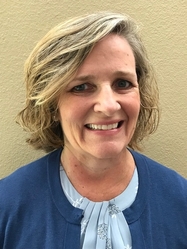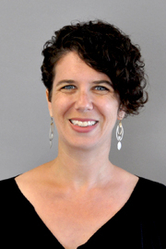A patient came into the Goleta location of the Santa Barbara Neighborhood Clinics pleading with people at the front desk to speak to Mayra Garcia, a wellness navigator at the clinic, despite not having an appointment. The clinic is part of a network of four clinics in the Santa Barbara region of California that serve mainly patients on Medi-Cal, the state’s Medicaid program, or patients who are uninsured.

“She was crying. Her husband had been deported. She couldn’t pay the rent, she needed food, a job, childcare,” says Garcia who appeared and gently guided the woman to sit down in her office. Then Garcia jumped into action. She helped the woman enroll her infant into child care, counseled her about talking to her landlord, and set her up with food stamps. Soon after that, the woman found a job.

“The fact that she immediately turned towards focusing on strengths to support her family and knew who she could turn to for help, that was huge,” says Dr. Andria Ruth, the pediatrician for the patient’s family. The encounter occurred about a year ago, but it made a real impression on Ruth.
“She could have simply withdrawn, become depressed or chosen dysfunctional ways to cope,” she says, “but she sought out help because she understood that buffering the effects of this stress was possible and important.”
And the distraught mother also knew that she could get help from her pediatrician’s clinic.
A new study on wellness navigators and patients participating in the Resiliency Project, which was published in the journal Clinical Practice in Pediatric Psychology, shows the critical role they play in helping patients connect with support services. In fact, almost all—94 percent—of the patients like the woman helped by Garcia followed through on connecting with support services. This study is the first of several these researchers are doing that are showing how integrating practices and policies based on the science of childhood adversity is expanding the definition of what comprises health and health care, and is resulting in a sea change in pediatric and family practice.
The study focusing on wellness navigators ran from October 2017 to September 2019. It is part of the ongoing Resiliency Project Study in four clinics that are part of the Santa Barbara Neighborhood Clinic network, and was funded by several sources, including the Bower Foundation, the Towbes Foundation, Cottage Health, the U.S. Human Resources & Services Administration, and the Center for Youth Wellness’ National Pediatric Practice Community on ACEs.

“The purpose of the study was to highlight how integral wellness navigators have been to the success of ACEs screening and to making referrals to services,” says Dr. Miya Barnett. Barnett is an assistant professor in the Department of Counseling, Clinical and School Psychology at the University of California at Santa Barbara and the co-principal investigator of the study along with Dr. Maryam Kia-Keating, which was coauthored by Ruth and Garcia.
Besides the efficacy of the wellness navigators, researchers are looking at whether study participants have fewer no-shows at well child visits, fewer ER visits, higher immunization rates, changes in their baby’s weight, asthma diagnoses, reports of parent stress and parent empowerment, and fewer referrals to child welfare services. The results from that research will likely come out in 2022. (Read this ACEs Connection story to learn more about the Resiliency Project Study. Click here and here for other stories about the benefits of integrating wellness navigators into clinics screening for ACEs.)
The term adverse childhood experiences or ACEs comes from the landmark CDC/Kaiser Permanente Adverse Childhood Experiences Study (ACE Study) that linked ACEs to adult onset of chronic disease, mental illness, violence and being a victim of violence in more than 17,000 adults.
The ACE Study examined 10 types of childhood traumas — including living with an alcoholic or depressed parent or experiencing abuse or neglect — in adults who were mostly white, middle- and upper-middle class, college-educated, and had jobs and great health care. The study found that ACEs are common — most people have at least one. People who have four or more different types of ACEs — about 12 percent of the population — have a 1200 percent higher risk of attempting suicide and a 700 percent higher risk of becoming an alcoholic, compared with people who have no ACEs. Many other types of ACEs—including racism, bullying, a parent being deported, and community violence—have been added to subsequent ACE surveys. (ACEs Science 101; Got Your ACE/Resilience Score?)
The epidemiology of childhood adversity—which produce ACE surveys—are one of five parts of ACEs science, which also includes how toxic stress from ACEs affects children’s brains, the short- and long-term health effects of toxic stress, how toxic stress is passed on from generation to generation, and research on resilience, which includes how individuals, organizations, systems and communities can integrate ACEs science to solve our most intractable problems.
Any parent with an ACE score of 2 or more, or whose baby had an ACE score of 1 or more, was invited to participate in the Resiliency Project Study. Of the 249 parents and babies screened, 126 pairs met that criteria. And of those, 99 agreed to join the study. On average, parents participating in the study had ACE scores of 4.5, and their babies had an average score of .57.
The Santa Barbara Neighborhood Clinics has been using the CYW-Q ACEs screener developed by the Center for Youth Wellness, which includes 10 questions from the original ACE questionnaire as well as additional questions, including ones about discrimination based on race, sexual orientation, and whether a parent had been in foster care, had witnessed violence in the community, or had a loved one deported. And since Santa Barbara had experienced a devastating fire in 2017, the clinic added an ACE question asking, “If you or someone you love was seriously injured or you feared injury or death due to a national disaster…” The study focused on screening parents and babies in the first year of life, at their 4 month well child visit, or their first visit thereafter. Parents were asked to count up the number of ACEs that apply to them and their babies and put the total at the top of the form.
Wellness navigators asked parents participating in the Resiliency Project Study what their most pressing needs were. The three most requested resources were help with health insurance enrollment, childcare and housing. The navigators made 541 referrals to 62 different community-based organizations from October 2017 to September 2019 including those that provide support for domestic violence, mental health and legal issues. Besides meeting in person, wellness navigators also reached out to families by phone to see if they needed help.
“They need guidance, and sometimes someone just to hold their hand,” says Garcia of the families. “There are a lot of resources they’re unaware of, or they worry, ‘If I ask for this is the [Immigration and Customs Enforcement] going to deport me? What’s going to happen to my kids?’”
As part of the study, Barnett, Garcia and Ruth wanted to learn if the wellness navigators, who come from the same communities as many of the patients, might help to rectify abiding inequities by removing barriers, such as language or cultural misunderstandings.
“I think the families become better advocates for their own child because they understand that toxic stress affects their child’s development, that they can be proactive, and that the wellness navigators are a resource they can turn to when they do need something,” says Ruth.
Other research shows the value of using healthcare workers from patients own communities. “Family specialists” who functioned as wellness navigators in a pediatric clinic in Oakland, California, for example, were able to make patients feel at ease by their conversational approach in interacting with them. “The results of this approach also positioned the clinic to identify and support families to address emergent needs before they became crises,” noted a reportpublished in 2019 by researchers at the University of Chicago’s Chapin Hall.
Such support from wellness navigators also underscores for Barnett how central equity is to any work around ACEs and resilience. “When looking at adversity and how to address it,” she says, “it’s always important to recognize who has been systematically impacted and what can be done to allow for more equitable health outcomes.”




Comments (0)